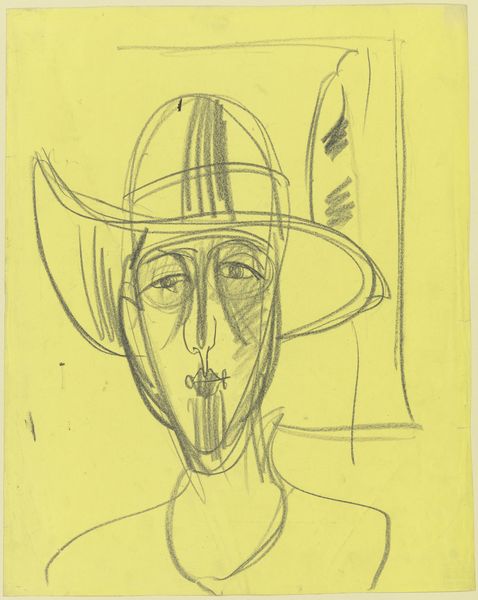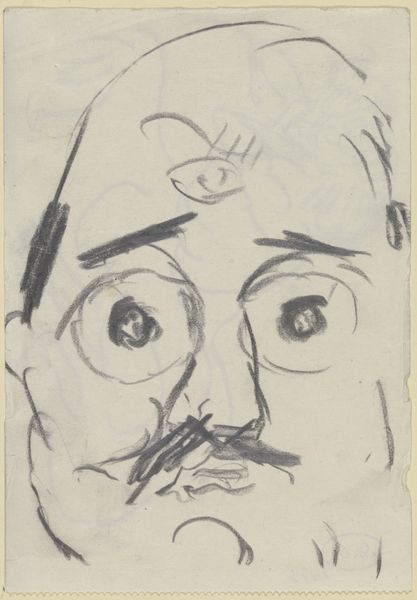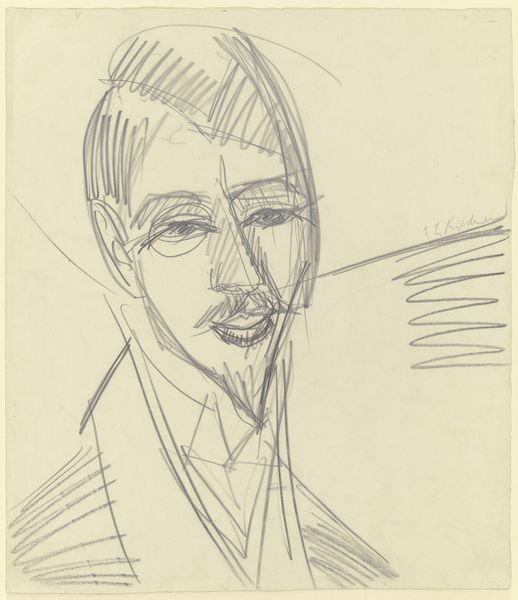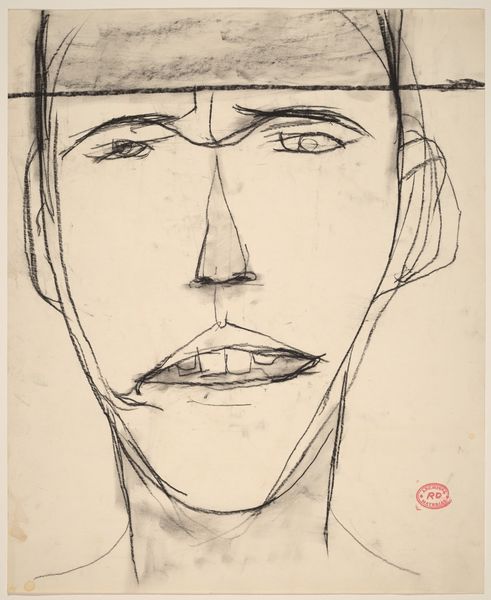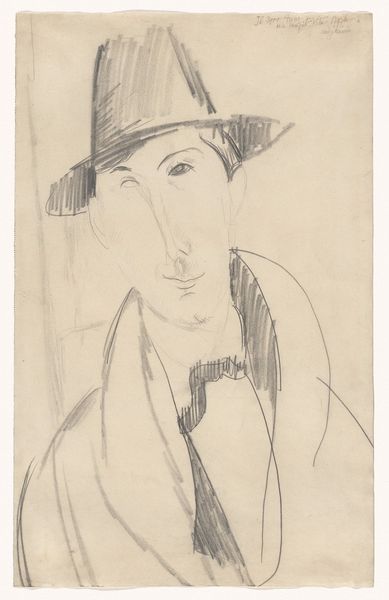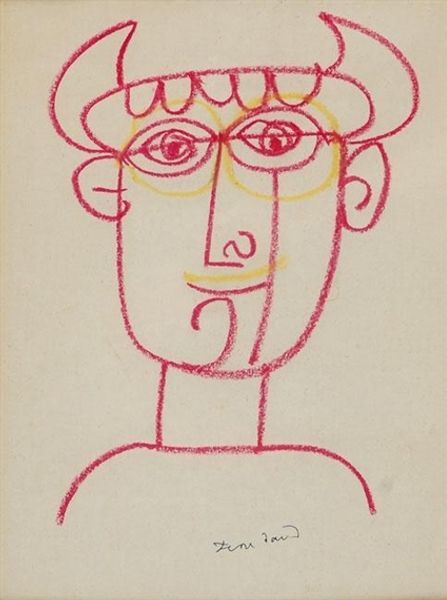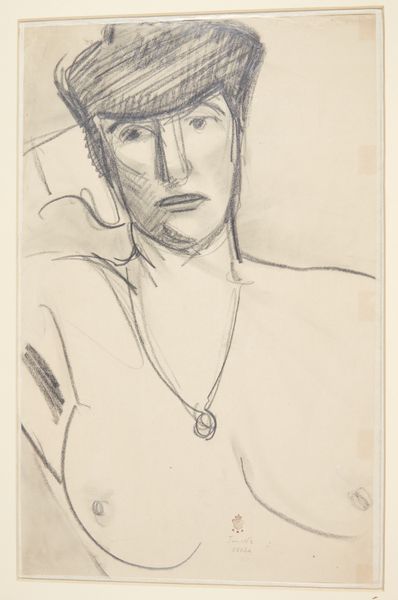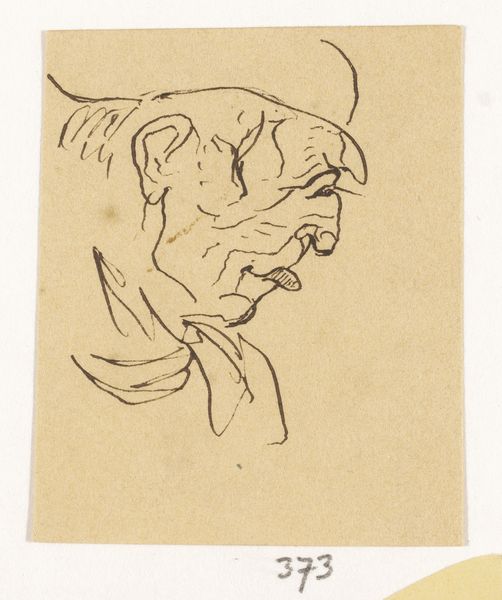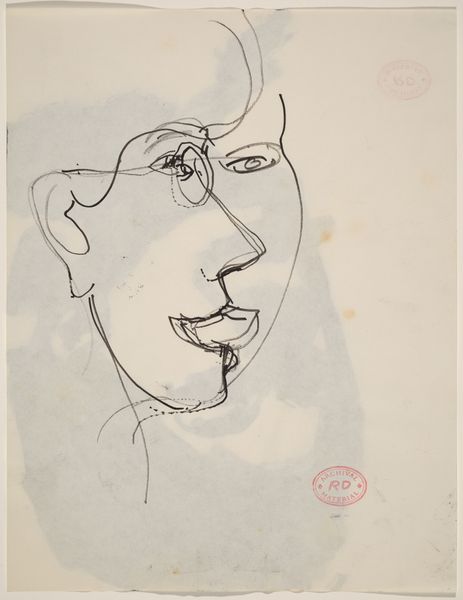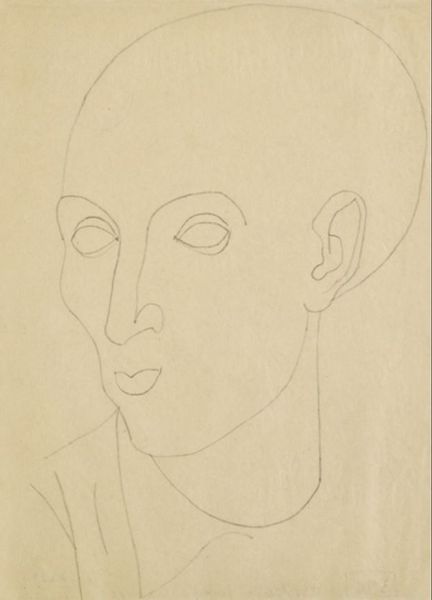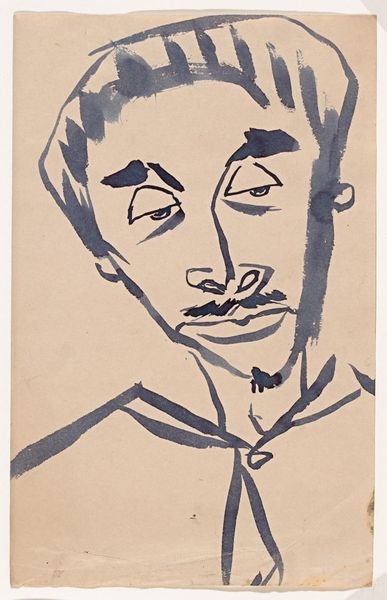
drawing, pencil, chalk
#
portrait
#
drawing
#
caricature
#
figuration
#
pencil
#
expressionism
#
chalk
Copyright: Public Domain
Curator: Welcome. We’re standing before Ernst Ludwig Kirchner’s "Portrait of Ester Haufler," a drawing in pencil and chalk completed around 1928. It's currently held here at the Städel Museum. Editor: It strikes me immediately with its rawness. The visible pencil strokes, the almost unfinished quality—there's a real energy in the materiality of the piece. Curator: Kirchner was, of course, a leading figure in German Expressionism. His work often explored the psychological and social alienation of modern life in pre-war Germany. We can consider this portrait in the context of the shifting societal roles after World War I and the Weimar Republic’s cultural output. Editor: I'm looking at how he’s reduced the face to such basic shapes, focusing almost on an archetype rather than a true likeness. What can you tell us about the labor that produced these types of portrait drawings? How did the means of its production relate to the end results? Curator: This drawing belongs to a series of portraits Kirchner made during his later years, away from the hustle of Berlin. His subjects from this period reflected a departure from the previous avant-garde circles he’d kept company with in Dresden and Berlin. His retreat into Switzerland led to this renewed focus on portraiture. Editor: What about the specific use of chalk and pencil? I see this contrast and think about the deliberate choice to expose the making of this piece; Kirchner seems less focused on perfecting a traditional "likeness," and more invested in highlighting the physical act of its construction. Curator: I agree; he clearly favored that raw expressive style. While some critics dismissed his later work as a decline from the intensity of the "Brücke" period, others see it as a mature exploration of form and human connection in a more contemplative register. Editor: Contemplative but also slightly satirical, even comical. See that thin mustache perched precariously above those overdrawn lips! This caricature almost makes a joke out of the sitter. To consider the work's historical and cultural relevance, how did society view caricature or comedy as low-brow artistry compared to other fine art outputs? Curator: Exactly! We see these complex tensions mirrored in his work from that era, often laced with a bittersweet sense of nostalgia, filtered through the fractured lens of Expressionism. Editor: Ultimately, I'm left thinking about how the artist's own touch remains so powerfully present in the visible texture and raw handling of his chosen materials. Curator: Indeed. Hopefully, visitors will reflect on how a seemingly simple portrait can evoke these multilayered facets of an era of immense societal change and cultural anxiety.
Comments
No comments
Be the first to comment and join the conversation on the ultimate creative platform.
